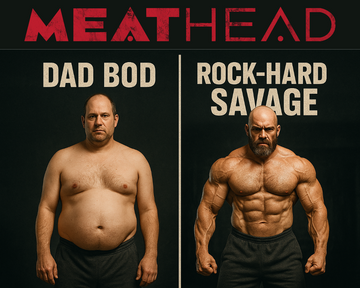In the pursuit of bigger, stronger muscles, many lifters focus solely on pushing heavier weights, squeezing out extra reps, and adding more sets. While these are important components of muscle growth, there’s one crucial element most gym-goers overlook: stretching. Neglect it, and you could be sabotaging your muscle gains. Let’s face it, your warm-ups and cool-downs probably consist of a few half-hearted stretches. But if you're serious about building size and strength, it’s time to rethink that approach.
The Forgotten Key to Muscle Growth
Stretching is often dismissed as something “soft” or “optional,” but nothing could be further from the truth. When it comes to hypertrophy (muscle growth), stretching plays a pivotal role in optimizing both your training and recovery. Here’s why:
-
Improved Range of Motion (ROM) Building muscle isn’t just about hammering out reps. You need to target the full muscle fiber spectrum, which means working through a full range of motion. Stretching enhances flexibility, allowing you to extend your ROM in key lifts like squats, deadlifts, and presses. More ROM means more muscle engagement and growth stimulation.
-
Fascia Stretching and Muscle Expansion Your muscles are surrounded by a dense connective tissue called fascia. Think of it like a tight balloon constricting your muscle. Intense stretching post-workout can help stretch the fascia, giving your muscles more room to grow. It’s like upgrading from a two-bedroom apartment to a mansion—there’s more space for expansion. Ever notice the swelling feeling after a deep stretch? That’s not just blood flow—that's your fascia yielding to make room for growth.
-
Prevention of Injuries Building muscle is a grind, but one injury can set you back weeks, if not months. Tight muscles and poor flexibility dramatically increase your risk of injury during heavy lifts. Stretching before and after workouts helps keep your muscles pliable, reducing the likelihood of strains, tears, or other debilitating injuries. Staying injury-free is key to consistency, and consistency is what builds size.
-
Enhanced Blood Flow When you stretch, you increase blood circulation to your muscles. This is important because blood carries oxygen and vital nutrients to the muscle tissue, which aids in repair and growth. Better blood flow means faster recovery and more frequent training sessions, which leads to faster muscle growth.
-
Boosted Muscle Activation Stretching activates muscles that are otherwise dormant during your workouts. If your muscles are tight, certain fibers can “shut down,” making it harder to recruit them during a lift. Stretching primes the muscle groups you're targeting, ensuring that you're firing on all cylinders when it’s time to train.
Dynamic vs. Static Stretching: Know the Difference
Not all stretching is created equal, and when you stretch matters. Dynamic stretching involves active movements that mimic your workout and should be done pre-workout to warm up muscles and increase ROM. This primes your muscles without reducing their ability to contract maximally during lifting.
Static stretching, on the other hand, involves holding a stretch for an extended period. This is best saved for after your workout when your muscles are already warm. Post-workout static stretching can reduce muscle tightness, increase flexibility, and contribute to the fascia-stretching effect mentioned earlier.
Incorporating Stretching Into Your Routine
To maximize muscle growth, stretch with purpose. Here's a game plan to follow:
-
Pre-Workout: Dynamic Stretches (5-10 minutes)
Include movements like leg swings, arm circles, walking lunges, and shoulder dislocates. These will get your blood pumping and improve your ROM, ensuring you lift heavier and with more control. -
Intra-Workout: Fascia Stretching
After a few sets of heavy lifts, stretch the worked muscle group for 30 seconds to a minute. For example, after a chest workout, use a doorway to stretch the pecs. Hold it until you feel a deep, burning stretch—this is when the fascia starts to yield. -
Post-Workout: Static Stretches (10-15 minutes)
Spend quality time holding static stretches for each major muscle group. Hold each stretch for at least 30 seconds, and focus on deep breathing to relax into the stretch.
Don’t Underestimate the Power of Stretching
If you’ve been skipping stretching or treating it as an afterthought, now’s the time to change that mindset. Want bigger muscles? You have to give them the space to grow—literally. Stretching is the missing link to unlocking your full muscle-building potential.
So, don’t just stretch to “loosen up”—stretch to grow.





